Videography / Cinematography Course In Kathmandu - Nepal
Learn to shoot professional videos and tell stories with them.

Course Details
- Duration : 15 Days
- Shift : Morning & Evening
- Time : 1.5 hrs/day
- Investment : NRs. 7,500
Course Overview
Join our highly regarded Videography Course in Nepal, where you’ll dive into the world of video creation and storytelling. As video content becomes an increasingly popular and effective medium, our course offers a unique opportunity for both beginners and intermediate video enthusiasts to build a strong foundation in videography.
Over the span of one month, you will be guided by our skilled and experienced cameramen, who will teach you everything from the basics to advanced videography techniques. The course starts with fundamental concepts, such as camera and lens knowledge, best settings for cinematic videos, composition, lighting, and shot planning. As you progress, you’ll learn about camera movements, sound and audio techniques, and how to use gimbals and other accessories to enhance your videos.
Who Is This Course For?
- DSLR and mirrorless camera owners shooting in auto mode
- Passionate video makers
- Wedding cinematographers
- Those looking to build a career in videography
- Business owners wanting to create their own videos
- Travelers, mountaineers, and guides
- Vloggers
- Students of journalism, filmmaking, media management, interior design, fashion design, and more
- Wedding planners, event organizers, hoteliers, and beauticians
- Aspiring TV, online media, and news channel creators
- Online content creators
Course Outcome
- Shoot professional interview videos
- Create wedding and event videos
- Produce wedding highlight videos
- Film news and online media videos
- Start your own vlog
- Shoot music videos
- Create documentaries and short films
Course Details
- Duration : 1 Month
- Shift : Morning & Evening
- Time : 1.5 hrs/day
- Investment : NRs. 15,000
Features
- Camera not required, but helpful.
- Certificate will be provided
- Slide show presentation
- Placement & Internship
- Class repetition facility
- Outdoor practical sessions
Requirements
- There is no age limit for this course.
- A camera is not required, but having one helps you learn faster and better. If you have a camera, bring it. If you're planning to buy a new one, enroll in the class first. The class will help you make a better decision.
- No specific qualifications are needed, but you should be able to understand and read the menus and buttons on your camera.
- You will need to bring a laptop for the photo editing part of the course, which will last for three days.
Notes For Students
- Videographers are in high demand in Nepal. Deserving candidates will have placement and internship opportunities with various media companies.
- You will have the opportunity to work with the professional team at Idea Media Training.
- If you perform well in class, you'll have the chance to work on Idea’s projects and events.
- Engage in outdoor practical sessions for hands-on learning
Course Content
- Importance of file organization
- Setting up folders and subfolders
- Naming conventions for files
- Using metadata and tags
- Best practices for importing media
- Overview of the editing software interface
- Key panels and their functions
- Customizing the workspace
- Navigating the timeline
- Shortcut keys for efficiency
- Starting a new project
- Setting project parameters
- Importing media files
- Saving and backing up projects
- Managing project settings
- Understanding sequences
- Creating custom sequence settings
- Matching sequence settings to your media
- Adjusting resolution and frame rate
- Best practices for sequence management
- Straight cuts
- L-cuts and J-cuts
- Jump cuts
- Match cuts
- Cutaways and inserts
- Principles of cutting
- Emotional and visual continuity
- Pacing and rhythm
- Cutting on action
- Storytelling through cuts
- Performing insert edits
- Swapping clips in the timeline
- Moving clips without disrupting the timeline
- Overwrite edits
- Ripple and roll edits
- Importing and adjusting images
- Adding motion to still images
- Creating slideshows
- Using keyframes with images
- Best practices for image resolution and quality
- Adding markers to the timeline
- Using markers for notes and comments
- Navigating with markers
- Organizing and color-coding markers
- Using markers for collaboration
- Introduction to speed ramping
- Creating slow-motion effects
- Reversing clips
- Adjusting speed keyframes
- Best practices for speed effects
- Understanding track matte key
- Creating and using matte layers
- Applying track matte key effects
- Practical applications of track matte key
- Examples and exercises
- Importing and managing audio files
- Adjusting audio levels and balance
- Adding sound effects
- Using audio transitions
- Syncing audio with video
- Introduction to keyframes
- Animating properties with keyframes
- Using keyframes for motion effects
- Adjusting keyframe interpolation
- Practical animation exercises
- Animating scale for zoom effects
- Adjusting opacity for fades and transitions
- Moving elements with position keyframes
- Creating rotation animations
- Combining animations for complex effects
- Overview of the graphics panel
- Creating and editing graphics
- Adding shapes and lines
- Using graphic templates
- Best practices for graphic design
- Adding and formatting text
- Using text animations
- Creating lower thirds and titles
- Incorporating graphics into video
- Practical exercises with text and graphics
- Basics of color correction
- Adjusting exposure, contrast, and color balance
- Using scopes for accurate corrections
- Matching color across clips
- Advanced color correction techniques
- Understanding LUTs
- Importing and applying LUTs
- Adjusting LUT intensity
- Creating custom LUTs
- Practical uses of LUTs for color grading
- Introduction to masking
- Creating and adjusting masks
- Using masks for effects and transitions
- Combining masks with keyframes
- Practical examples of masking
- Creating a write-on effect
- Animating text and graphics
- Adjusting timing and speed
- Using masks for write-on animations
- Practical exercises with the write-on effect
- Creating glitch effects manually
- Using glitch effect presets
- Adjusting glitch parameters
- Practical applications of glitch effects
- Examples and exercises
- Storytelling techniques for wedding videos
- Creative editing for music videos
- Structuring documentaries
- Using b-roll and cutaways
- Best practices for each type of video
